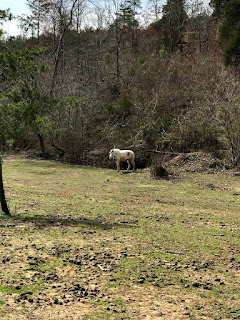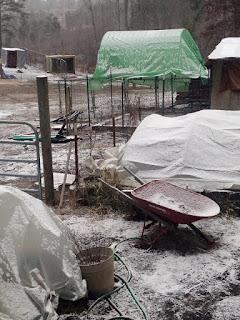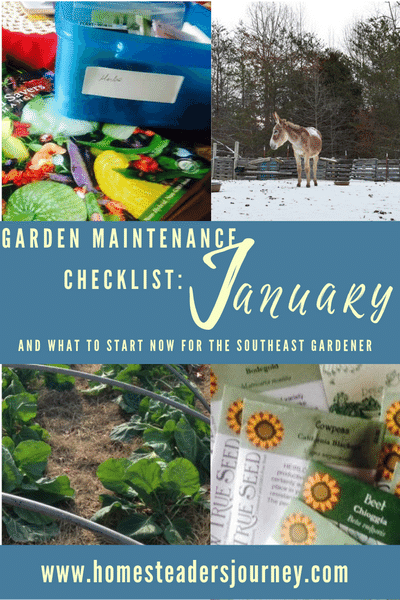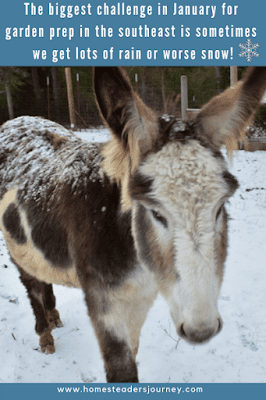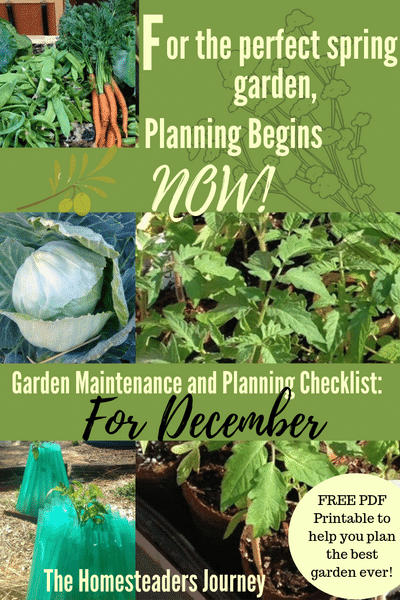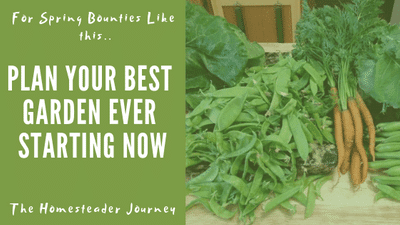For many of us in the upper and certainly lower parts of the south March is GO TIME for the garden!
I get really excited once March rolls in and happily get out my Garden Checklist because there is so much to do!!
This is when I really start seeing life come back into the pastures and woods here in southeast TN and I am so thankful to God! It's so beautiful!
Last month some seeds were started inside, some thrived, some did not! Those that did are in the greenhouse now!
My snow peas are up but the sugar snaps are not... I should have put a blanket over them too. Oh well, it's in next years notes!
It's not too late to plant snow peas in the southeast though it's getting close! If you're in a cooler climate you may just be getting ready to plant them! You can check out my post here on some tricks I use to get good crops and the best variety out of the 6 I have grown Growing Snow peas!
 |
| Some mustard greens planted in the fall thriving under low tunnels |
My Garden Checklist For March
- Fertilize all fruit and nut trees and brambles such as blackberries. This is best done right before the leaves start to come out
- Give garlic a side dressing of compost
- Weed and compost any beds you missed in February
- Fertilize muscadines (or any grapes) before the buds swell
- I can start to Propagate Blueberries, Elderberries, and muscadines this month
- Divide mature perennial herbs such as comfrey.
- Sow clover cover crops if needed, and grass seeds for pasture improvement.
- Plant potatoes when daffodils are in full bloom
- When Forsythia blooms I can plant these outsides with frost cover on hand! lettuce, green onions, fava beans, burdock, carrots, cilantro, collard greens, dandelion, dill, kale, mustard greens, spinach,
- Inside or greenhouse start in flats: Veggies: main crop tomatoes, sweet peppers, tomatillos, ground cherries, kohlrabi, cabbage, celery. Herbs: Arnica, oregano, sage, sorrel, thyme, valerian, and parsley.
- Start sweet potato slips
- I can start to Harvest stinging nettle that's rapidly making a comeback!
All that and get your garden journals out to keep notes! My saved charts and notes through the years have helped me be successful in the garden more so than anything else.
If you haven't grabbed a copy of my Givers and takers plants to help you plan your garden you can grab it here! Nutrient Needs of Vegetables, Givers, and Takers
Spring Time and other happenings on the Farm
The only ones here more excited about spring than me is the horses! They are already leaving their hay and venturing out more and more nipping on all the grass the rains have brought up! Of course, its prime time for my equine to get rain rot so I shared this Rain Rot remedy a few days ago. You can check it out here if your animals love standing in the rain as much as mine! Rain Rot Remedy Herbal recipe
Below, I snapped this pic of my 5-month-old poodle puppies and my mini mare, Freckles. They were playing and watching me start seeds by the greenhouse.
Freckles is with foal and I couldn't be more excited or more nervous! Vets are on speed dial! She's the only horse I have bred to deliver this spring. Everyone else is due this fall or being bred to foal next spring. I love Freckles and she has great potential to be a good team partner for work. But first I'm praying for a healthy baby!! and an easy time for mom. 💓
If everything goes well I do plan to milk her just like I do my donkey jennies. If you are unfamiliar with why I would milk mare's or donkeys here are a few links
Mare's milk and donkey milk are extremely similar. Both are great for people with food sensitivities and allergies like me! They both have incredible medicinal properties. Both can be used to make Kumis which we love! Talk about energy after just 1 little shot of it! Mare's milk being higher in milk sugars than donkey milk will make a bit better product. Here's a bit about Koumis Wikipedia Kumis
For more info on Donkey milk and what donkeys can offer a homesteader, you can check out a few other posts I've done at this link Donkeys on the farm
Curious about donkey milk soap? You can try some here Etsy shop Donkey Milk Soap
Well, I think that's all that's going on here this week! Going to be a busy month getting everything done and I feel so blessed!
Have you have a blessed productive week of homesteading!

